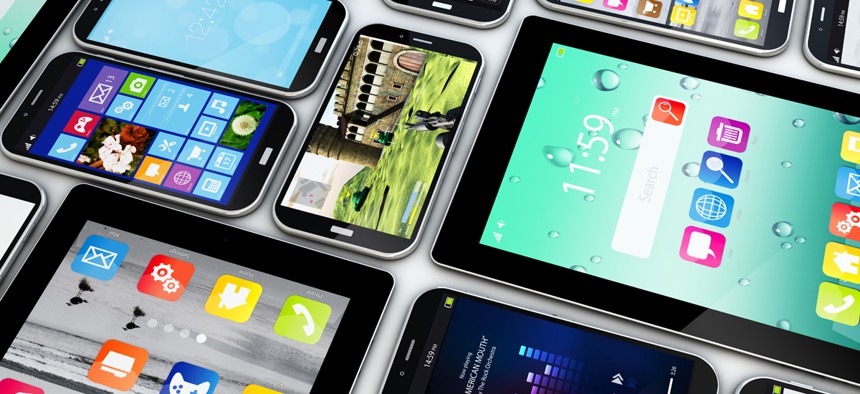Pentagon Not Ready for Bring-Your-Own-Device Just Yet

Georgejmclittle/Shutterstock.com
DOD Chief Information Officer Terry Halvorsen said the initiative has been delayed as other business got in the way.
The Pentagon’s “bring your own device” pilot, which would have allowed select military and defense personnel to use their own devices to handle unclassified information, is now on hold.
Announced in March and scheduled to begin this summer, Defense Department Chief Information Officer Terry Halvorsen said the BYOD pilot has been delayed as other business got in the way.
“I thought I would have a larger BYOD pilot started by now,” Halvorsen said, speaking at the DOD CIO Mobility Industry Day in Washington, D.C. “I don’t, and it’s my fault; I’m late, but a few other things happened that took our attention away from that."
Halvorsen pledged to "get one started," although he didn't lay out a specific timetable.
The risk-averse DOD garnered attention when it first announced the pilot, which sought to address head-on the challenges inherent in allowing employees to use their own devices for unclassified workloads. The pilot included a “big enough user base” that it would serve as a controllable test to determine, for instance, how to ensure each device meets minimum security requirements.
While the BYOD pilot is a provocative effort given DOD’s inherent need for high security – perhaps even more so in the wake of fallout from the massive Office of Personnel Management hack – Halvorsen suggested BYOD does have a place within DOD. It just may not be as large as originally intended.
“I do think in DOD there will be some places where you can use your own device,” Halvorsen said. “I do not think that’ll be a majority of our operations just because of the complexities of trying to manage that and keeping it secure enough.”
Halvorsen compared DOD to a multinational company. In terms of IT spend -- the Pentagon spends between $35 billion and $46 billion annually on IT -- no corporation comes close. Yet, DOD’s BYOD efforts do mirror the efforts of some Fortune 50 companies, which Halvorsen said have “scaled way back” on their BYOD programs.
“(Fortune 50) companies are finding out the complexity of managing all of the devices gets too hard,” Halvorsen said. “What I think we are more likely to see in DOD is saying: ‘Here is a set of devices. If you buy those, you can put them on the network and do the following limited things.’”
“We have a lot more to learn, and we will get our larger pilot started,” Halvorsen added. “I think there will be a niche for BYOD in DOD, but I don’t think it’s going to be our big answer.”
Meanwhile, DOD has made mobile strides in the classified domain. In June, the Pentagon announced users could access classified voice and data – up to the “secret” classification level – from anywhere in the world using “a new secure mobile device.”
(Image via Georgejmclittle/ Shutterstock.com)
NEXT STORY: IARPA wants a quantum leap



